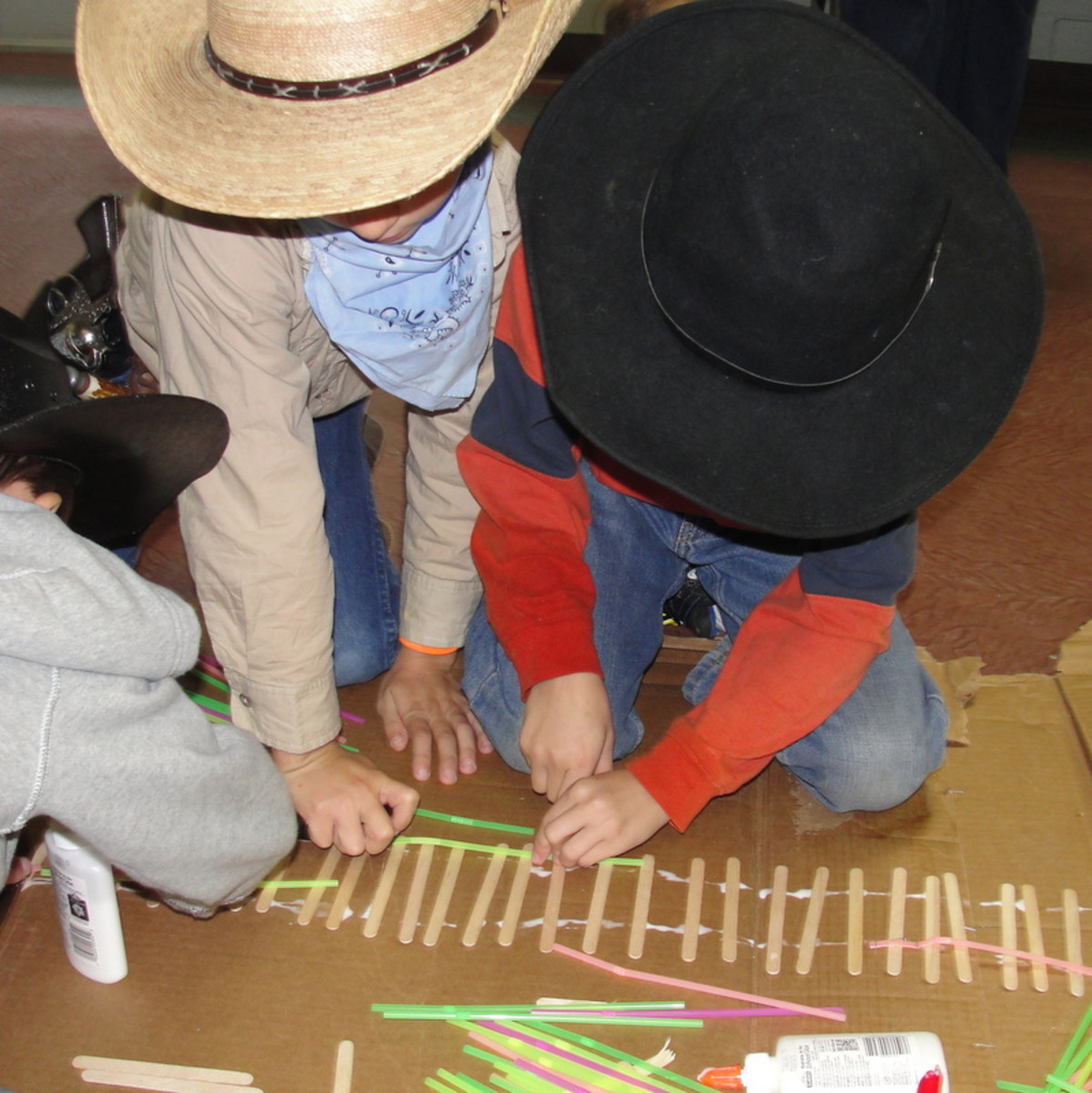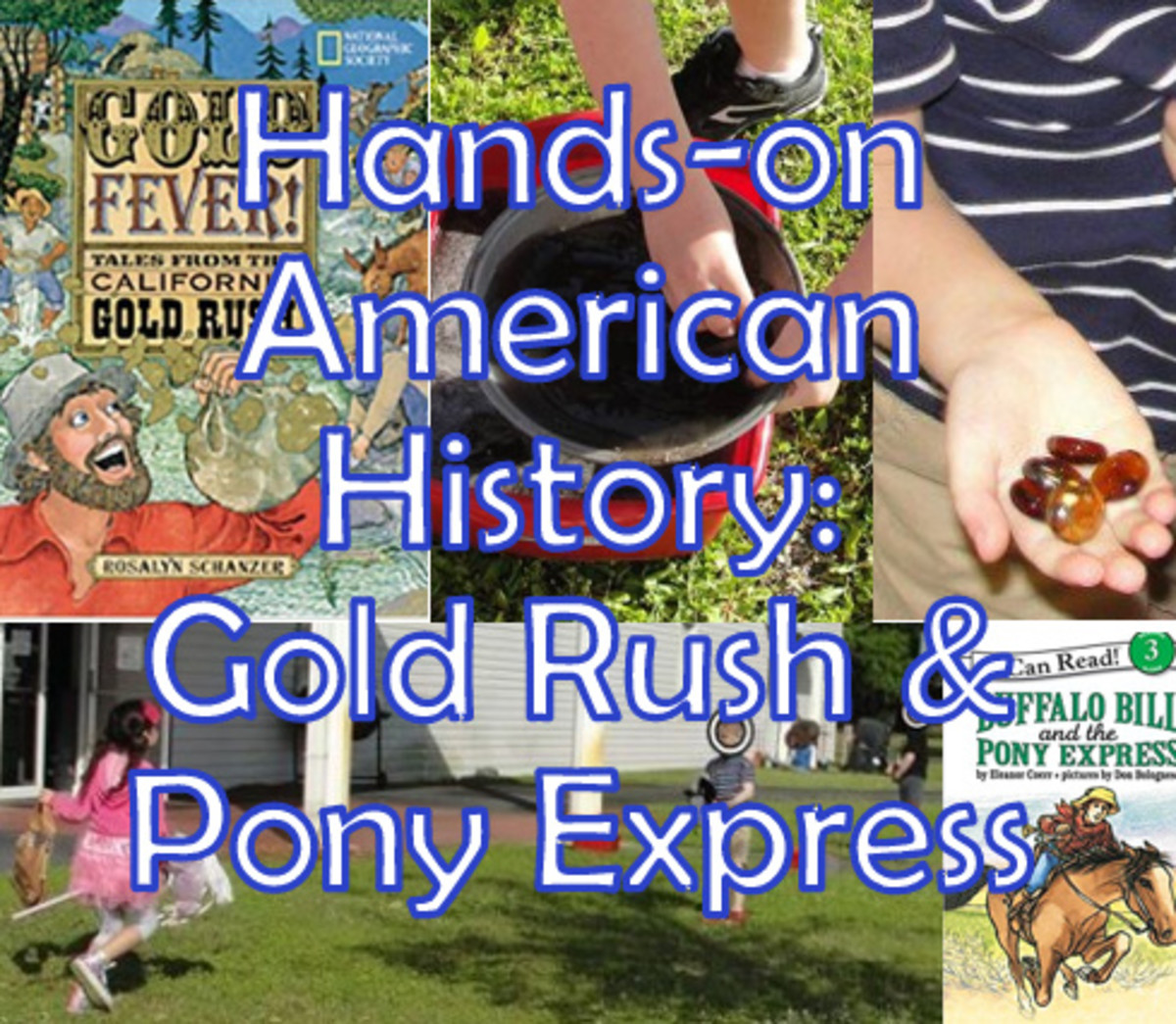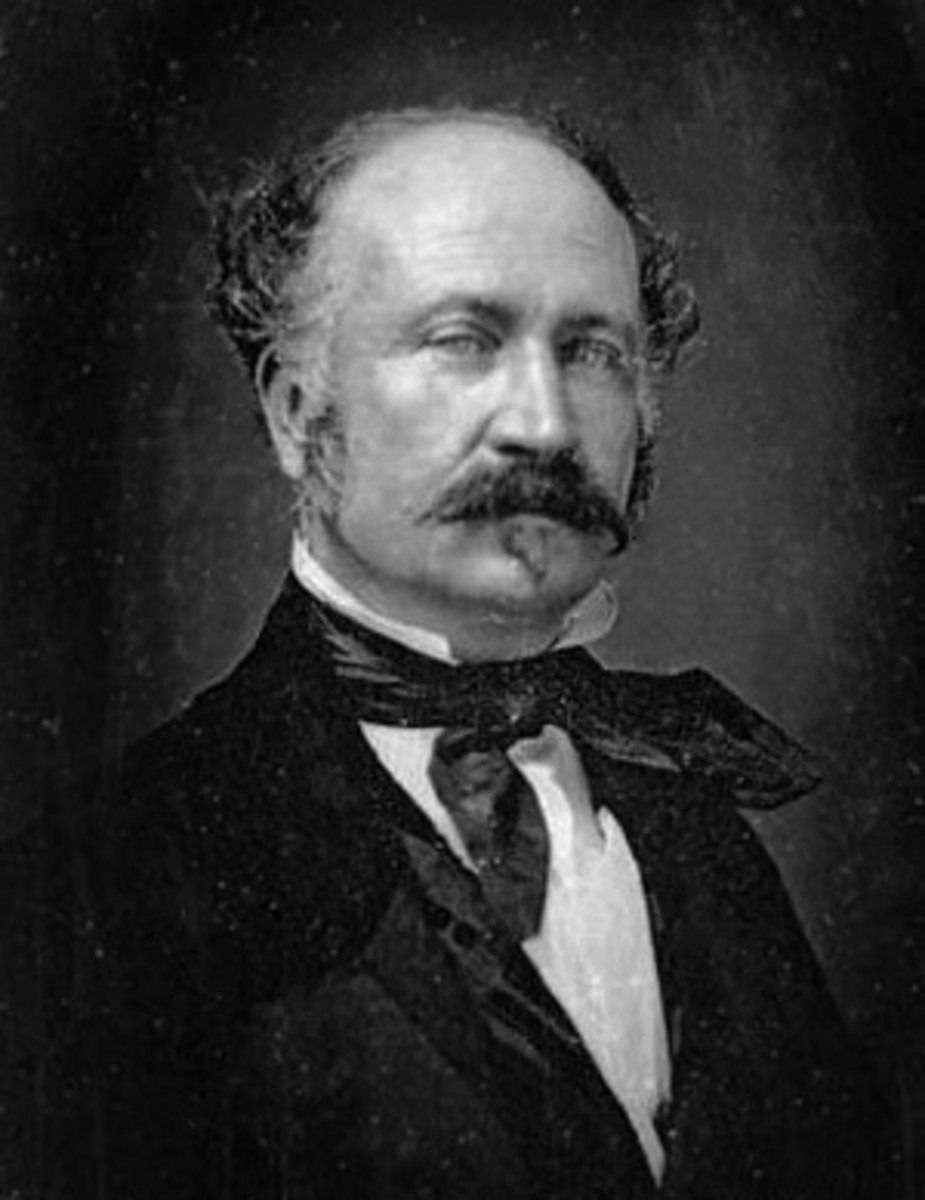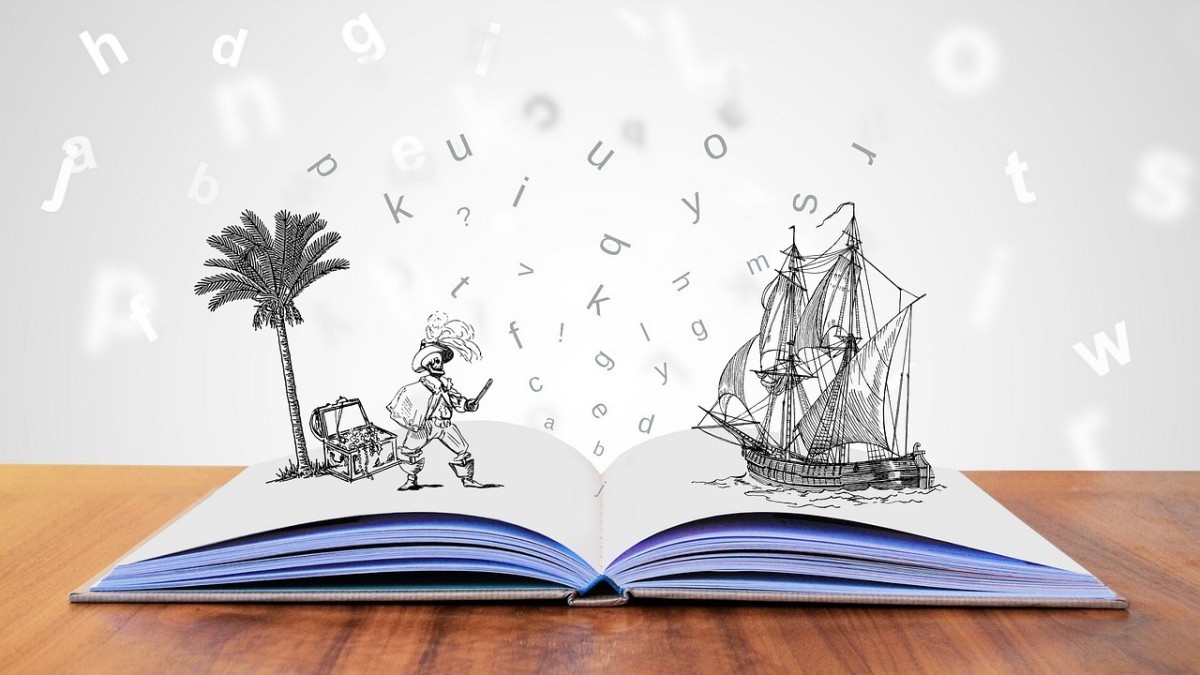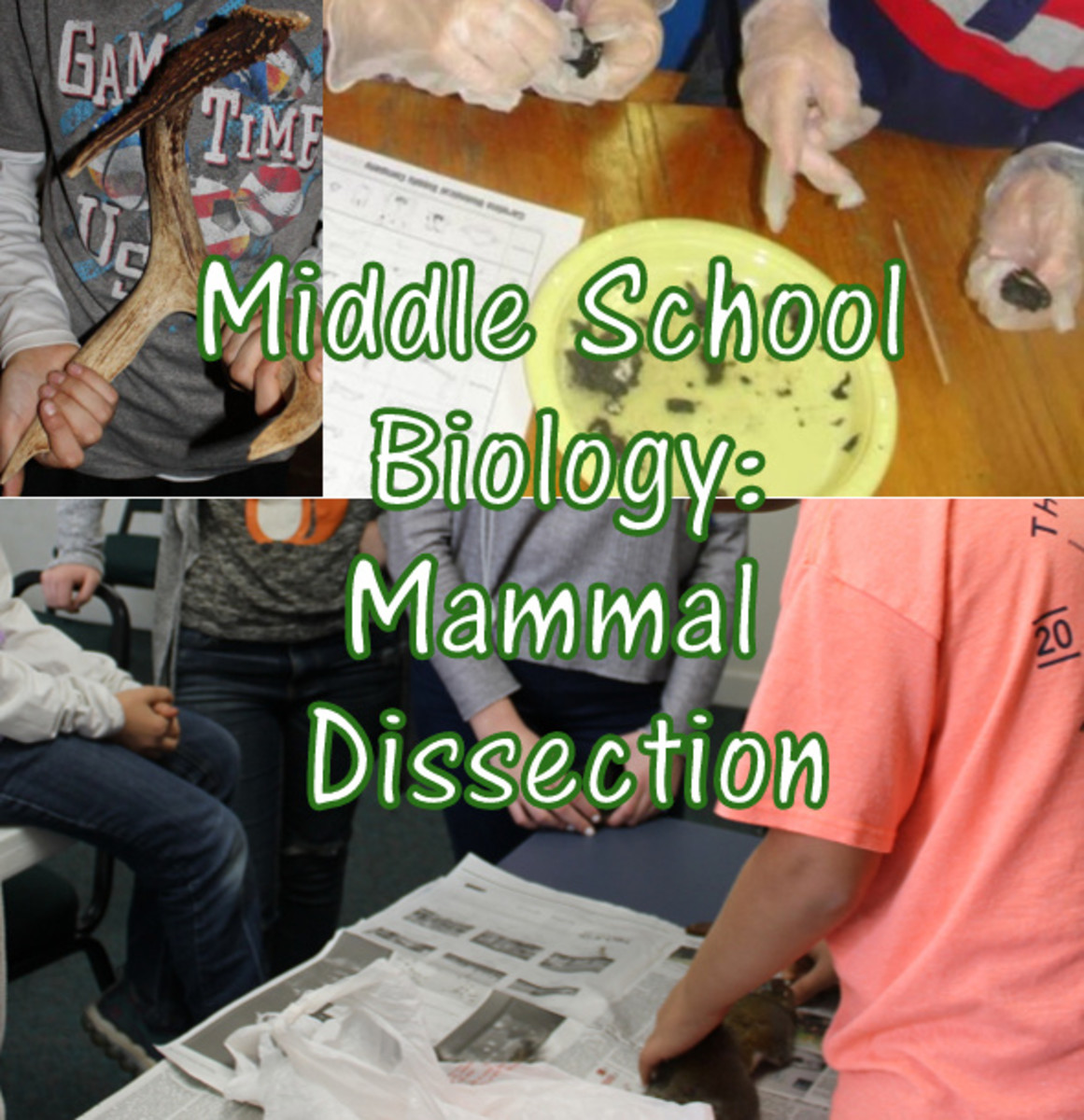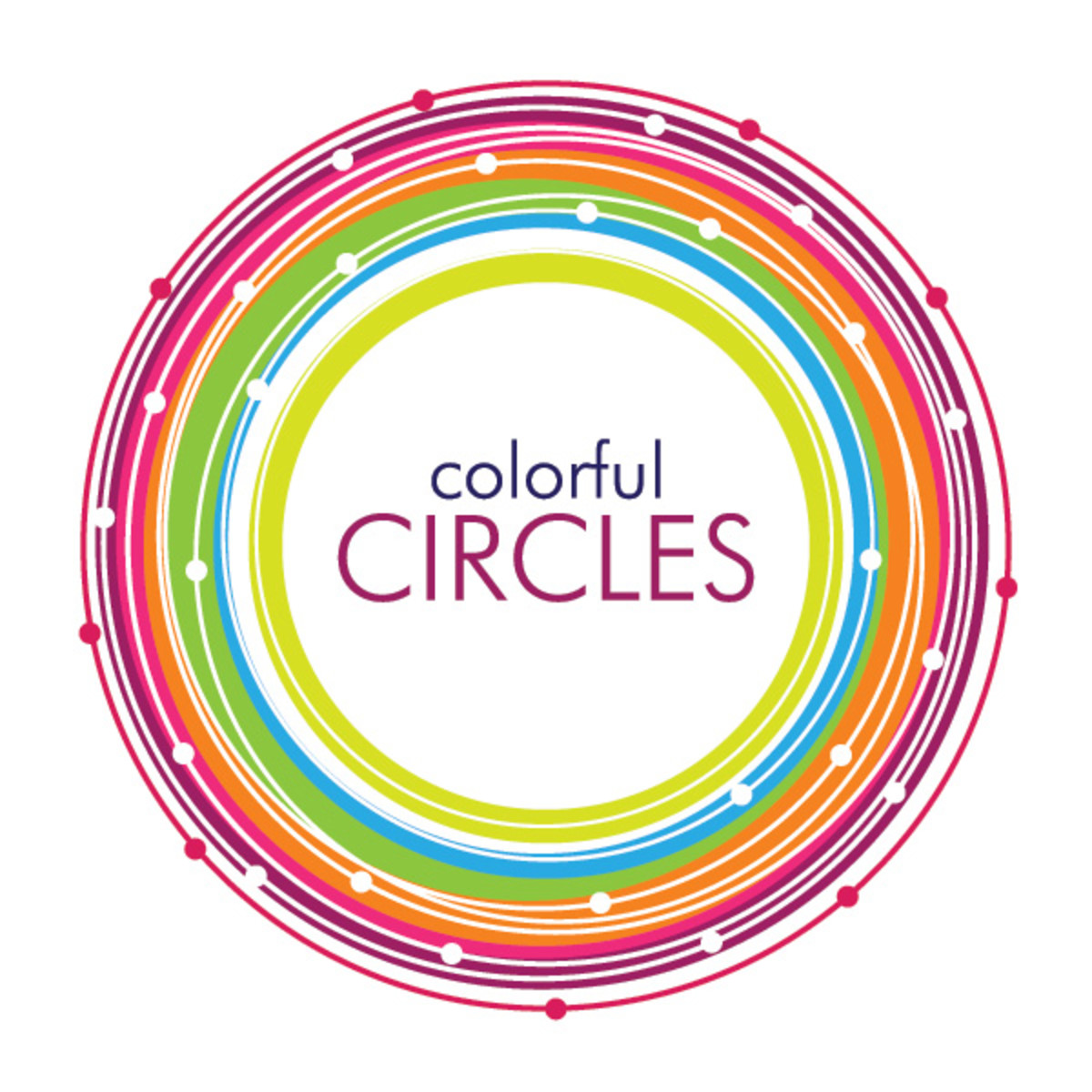- HubPages»
- Education and Science»
- Teaching»
- Lesson Plans
California Gold Rush United States History Lesson Plan
Author's Note
I originally taught this lesson in a small group setting of Middle schoolers in an after school activity group. The kids responded well and enjoyed the animated video I showed to them. This was early in my teaching experience, but a fairly good attempt in my beginning days. The following lesson has been updated to include the new edTPA Central Focus and Academic Language. However, the standards this lesson plan uses is based on New York States, and may be dated. The original lesson plan, did not have this. Please feel free to use this, share, or modify to better suit your classroom or teaching group.
Lesson Data
- Subject/Content Area: Social Studies
- Grade Level: 7th Grade
- Unit Topic: United States Westward Expansion
- Lesson Topic: California Gold Rush
- Duration of Lesson: 45 Minutes
- Materials: Reading packet with questions, computer/projector, iPad or other tablet with visuals available, pens and pencils.
Instructional Data
- Standards:
Reading Standards for Informational Texts 6 - 12
Grade 7
Key Ideas and Details
- Cite several pieces of textual evidence to support analysis of what the text says explicitly as well as inferences drawn from the text.
Speaking and Listening Standards 6 – 12
Grade 7
Comprehension and Collaboration
- Analyze the main ideas and supporting details presented in diverse media and formats (e.g., visually, quantitatively, orally) and explain how the ideas clarify a topic, text, or issue under study.
New York State Social Studies Standards
7.6a Conflict and compromise with foreign nations occurred regarding the physical expansion of the United States during the 19th century. American values and beliefs, such as Manifest Destiny and the need for resources, increased westward expansion and settlement.
Central Focus
This lesson is part of the unit about the United States’ expansion Westward. The purpose of this lesson is to give students an understanding of one the reasons Americans moved Westward and shows students how America was settled. Having students observe a short clip, read an article about the discovery of gold in California, and answer questions about both will engage students by having them recall information. Students will cite several pieces of textual evidence to support analysis of what the text says explicitly as well as make inferences drawn from the text and video. Students will also analyze the main ideas and supporting details presented in diverse media and formats (e.g., visually, quantitatively, orally) and explain how the ideas clarify a topic, text, or issue under study (Gold Rush).
Assessments
1.) Students will be able to answer the teacher’s questions regarding the document and video. More specifically, the teacher will question students on the 5 ways gold was tested to be real in the mid 1800’s. This is a formative assessment completed by the teacher.
2.) Students will be able to describe the event that led up to the California Gold Rush by completing the question packet provided by the teacher. This is a summative assessment recorded for a grade by the teacher.
Objectives
1.) At the end of this lesson students will be able to discuss and explain at least 3 out of 5 ways how gold was tested to be real in the mid 1800’s by Californian gold miners.
2.) At the end of this lesson students will be able to make describe the events that led to the California Gold Rush.
Opening/Anticipatory Set
1. As the students walk in, they will grab their work from the front of the classroom in the designated classwork area. The teacher will already have the video ready to play up on the computer/projector for the class.
2. Teacher: “Has everyone grabbed the classwork from the front of the room? If not, please come get a packet because it will have everything in it that we are doing today. Today we’ll be exploring the California Gold Rush. On the front page of your packets there’s three questions. I want you all to read the questions and just think in your heads about your answers. (Teacher waits 15 - 30 seconds to let the students read the questions and think).
3. The teacher calls on students randomly to answer the three questions. 2 students per question is the desired amount.
4. Teacher: “Good, good. Now that we have started thinking about gold and secrets, you guys get to watch a video that displays the answers that you guys were giving.
5. Show video. This video does not have any dialogue. This is key to English Language Learners as they are more easily able to follow along with the story and are not left behind for translation.
6. Teacher: “Who can tell me what happened in this video?” If no one volunteers, pick a student randomly.
Student: The small guy found some gold and try to hide it. The big guy found out and took it. Then they started fighting over it and a bird took it away from both of them.”
Teacher: Right! Gold is very expensive. People fight over it all the time. This is where the term Gold Fever comes in. These two guys were actually fighting each other over this lump of metal.”
Download File
- Gold Rush reading and questions 2.docx - Google Drive
This link contains a file you can download that has everything you'll need. It contains the article, questions, and an answer key.
1. Teacher: “I want everybody to relax while I read this story. I just want you guys to listen to it the first time. Then I’ll have you split into groups where you’ll read in one more time and then answer the questions on the next page.”
2. Teacher reads article. This allows English Language Learners to have the opportunity to listen to the document in a coherent way before making an attempt to read the article. This also helps other students that may need more time to process information in text form.
3. Teacher: “I want everyone to count off by 6’s and then get into those groups.” Teacher begins count off 1, 2, 3, 4, 5, 6, 1, 2....
4. Students get into groups. The teacher splits the class into groups for this lesson to make students feel more at ease with their classmates. Some students feel more comfortable speaking with their peers in a small group format. Also, placing students with behavioral problems in small groups will subdue their need to act out in front of an entire class. The teacher is able to observe the student more easily because the teacher is not directly lecturing the class. Even if the behavioral student acts out, the rest of the class is still able to carry on with the designed lesson.
5. Teacher: “When you read this, I want to see everyone in the group take a turn at reading. I don’t want to see one person reading and everyone else sitting back. If you’re not the one reading, try taking some notes in the margins of the page or underline something you find interesting. When you’re done reading, start answering the questions on the back. Let’s take a look at those really quick. Everyone turn the page. I want everyone to circle question number 10. Question number 10 is a question that I’d like for you to answer on your own without help from your group. When I collect these and look at them I don’t want to see the exact same thing on your paper. You may begin.”
6. As students are reading and answering questions, the teacher is walking around the room formatively assessing how students are reading. The teacher will pay extra attention to English Language Learners and Students With Disabilities to see how they are reading and answering the material. This allows the teacher to assess their ability to read and recall information without alerting all students in the classroom.
7. After the students have read the document and answered the questions, the teacher will rally them back into a big class again.
Teacher: “Let’s get back to our regular seats. We’ll go over our answers.
Teacher calls on students randomly for answers 1-9.
Teacher: “Let’s skip down to the multiple choice and answer those.”
Students answer multiple choice for the teacher.
Teacher: “I want to hear some answers for number 10. This was the question that I had you circle. The question asked you to make some inferences about what you thought would happen after James Marshall discovered the gold and then the news spread.” Teacher calls on students randomly.
Student answers will vary.
Teacher: “These are all great inferences. After people got the news that there was gold in California, there was a mass movement of people the moved from the Eastern United States to the Western frontier. A lot of Boom Towns rose up. Boom Towns were little cities that were built for gold diggers. They were abandoned after there was no gold left to be mined. This massive amount of people that moved to California actually made it possible for California to become a state. Before, California was only a territory. In order for a territory to become a state, it needed a certain amount of people living inside of it. Here’s a little fun fact. The NFL football team the San Fransisco 49er’s are named after the 1849 Gold Rush. Remember, gold was first found in 1848, but people did not start going to California until 1849.
Closure/Ending
Teacher: “Wrapping up, gold was initially discovered in 1948 in California by John Marshall. Word spread around which led to a mass amount of people from all over the United States. This was called the 1849 California Gold Rush. California then became a state because of all of the people that traveled there.”
Teacher: I just want t say you guys did a really nice job today. Before you guys turn in your packet, I want you to, on the last page, write down one thing that you found interesting from the lesson today and then hand it in to me. When you’re done sit quietly until the bell rings. There is no homework, but please remember to bring your textbooks to class tomorrow.
Reflection
1. Culturally Responsive Teaching: This lesson is culturally responsive because it respects the opinions of students’ differing socio-economic statuses in regards to questions asked by the teacher. To begin the lesson, students are asked what they would do if they won a certain amount of money. Students in differing socio-economic statuses are expected to answer differently to this question. It is important as a teacher to know your students and where they are from. If a teacher does not know their students, then they cannot teach them appropriately.
2. Accommodations:
Adaptations in this lesson are as follows:
Showing a video that does not have any dialogue. This is key to English Language Learners as they are more easily able to follow along with the story and are not left behind for translation.
The class is separated into small groups for a reading activity. The teacher splits the class into groups for this lesson to make students of all types (shy, students with disabilities, behavioral) feel more at ease with their classmates. Some students feel more comfortable speaking with their peers in a small group format. Also, placing students with behavioral problems in small groups will subdue their need to act out in front of an entire class. The teacher is able to observe the student more easily because the teacher is not directly lecturing the class. Even if the behavioral student acts out, the rest of the class is still able to carry on with the designed lesson. During this period of small group work, the teacher is able to formally asses the reading abilities of students with disabilities and English Language Learners.
3. Some prerequisite skills students will need for this lesson:
Students will need knowledge of what the United States looked like in the 1800’s.
Students will need to know the forced movements the United States government made on the Native Americans (e.g. Trail of Tears) in order for Americans to move West (Manifest Destiny).
4. Misconceptions:
California was not a state in the United States until 1850, a year after the infamous California Gold Rush in 1849.
Not everyone that went to California in the Gold Rush became rich. Many people never found gold, and some even died on the trip out West.
5. Academic Language: Students will be able to make describe the events that led to the California Gold Rush. The language function is to describe. The language demand is to describe the events that led up to the California Gold Rush. Vocabulary includes millrace, buckskin ascertain, certainty, composition, dense, fragmented, gold fever, and pondering. Students will be able to describe their thoughts on their inferences about what they think is going to happen after John Marshall’s story about finding the first gold in California and then communicate their answer to the teacher orally or written. The language function is to describe, while the language demand is to communicate (to the teacher).


